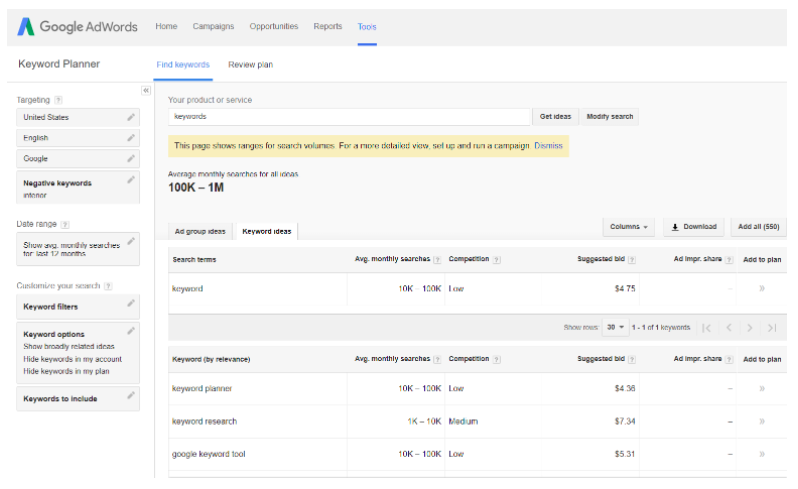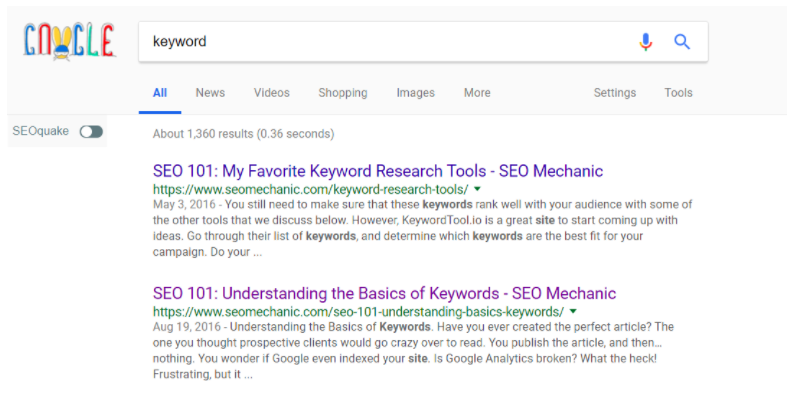On Site SEO Services
Fundamentals
On-Site SEO
On-Page Ranking Factors
Title Tag
Meta Description
Alt Text
Duplicate Content
Robots.txt
Robots Meta Directives
Schema.org Markup
HTTP Status Codes
Page Speed
Conversion Rate Optimization
Domains
URLs
Canonicalization
Redirects
Related Resources
Broaden your SEO Knowledge:
What is On-Site SEO?
On-site SEO (also known as on-page SEO) is the practice of optimizing elements on a website (as opposed to links elsewhere on the Internet and other external signals collectively known as “off-site SEO”) in order to improve search engine ranking and visibility.
Once Google crawls your website, focus on how to optimize every page for the most traffic.
Here are on-page strategies to improve how your site appears in search results.
#1. Keywords
Over the past decade, keywords have gone from search phrases to semantic phrases that help understand the intent of search engine users.
Using keywords helps Google understand the central theme of each page. Therefore, use keyword research to create compelling topics that relate to what users need.
Use Google’s Keyword Planner tool to find the keywords your users will use. Keep in mind that you want to use money keywords. Those are the keywords that customers are more likely to use when they are ready to purchase a product.
The more specific a search is, the more likely they have done preliminary research and are ready to buy. For example, a plumber would go after a targeted keyword like “leaking hose bibb” instead of the generic “water leak.” If you know what a “leaking hose bibb” is, you probably need help with that problem.
For more information about keyword research check out our SEO 101: Understanding the Basics of Keywords article.

#2. Unique page titles
Every page should have a title tag. This page title should reflect the content you have on the website page based on your keyword research.
For example, if you sell red bikes on a page don’t title the page “Blue Bikes” or just “bikes.” Also, do not use generic page titles like “Untitled” or “New Page” that users often ignore.
The advice might sound basic, but many marketers lose traffic because of these omissions.
Visitors who come to a page not correctly titled spend less time on your site and more bounces (leave a website after visiting one page).
Google tracks time on site and bounces to determine the value of your content and whether to deliver your page in future searches.
Also, title tags show up in search results. Make sure you create a dynamic title tag that encourages users to click on your page.

Finally, keep it short. You only have limited space for your title. Use it wisely, so people and search engines want to learn more.
#3. Description meta tags
The meta description is a critical component of your on-page search results. As you guessed, this information describes the page in more detail than the title tag. If the page title is the enticement to visit your page, the meta description backs up that reason with logic.
Furthermore, Google uses your meta description as snippets on the search engine. Similar to the page title, it does show up in the search results.
Header Tags
We discussed in the content above how heading tags separate content. However, we want to talk about how to use heading tags to improve your search results.
#1. Provides an outline
Having quality heading tags provides a framework for your website page. It gives the structure to your content, so you can quickly break down the topic for your readers and Google spiders.
#2. Avoid heading tag text that is not helpful
Your heading tag organizes your website pages. Therefore, the heading tag text must inspire readers to check out more detailed information on the page.
While you should not waste readers time with extra text anywhere on the page, you need to be particularly concise with your heading tags.
#3. Keep heading tags sizes uniform
Do not have heading tags longer than 50-70 characters. Keeping the heading tags similar in size makes it easier for Google to read the heading tags and identify subtopics on your post or page.
#4. Do not overdo the headings
Since heading tags outline the website, you need to use them appropriately. If you use them too much, then it could denigrate the quality of the heading tags you use.
As you review this white paper, you can get an idea of the structure. More prominent topics use H2 tags, which subtopics are H3 tags. The title at the top is the H1 tag.
Return to: Table of Contents for SEO Guide
 Meet The Team
Meet The Team